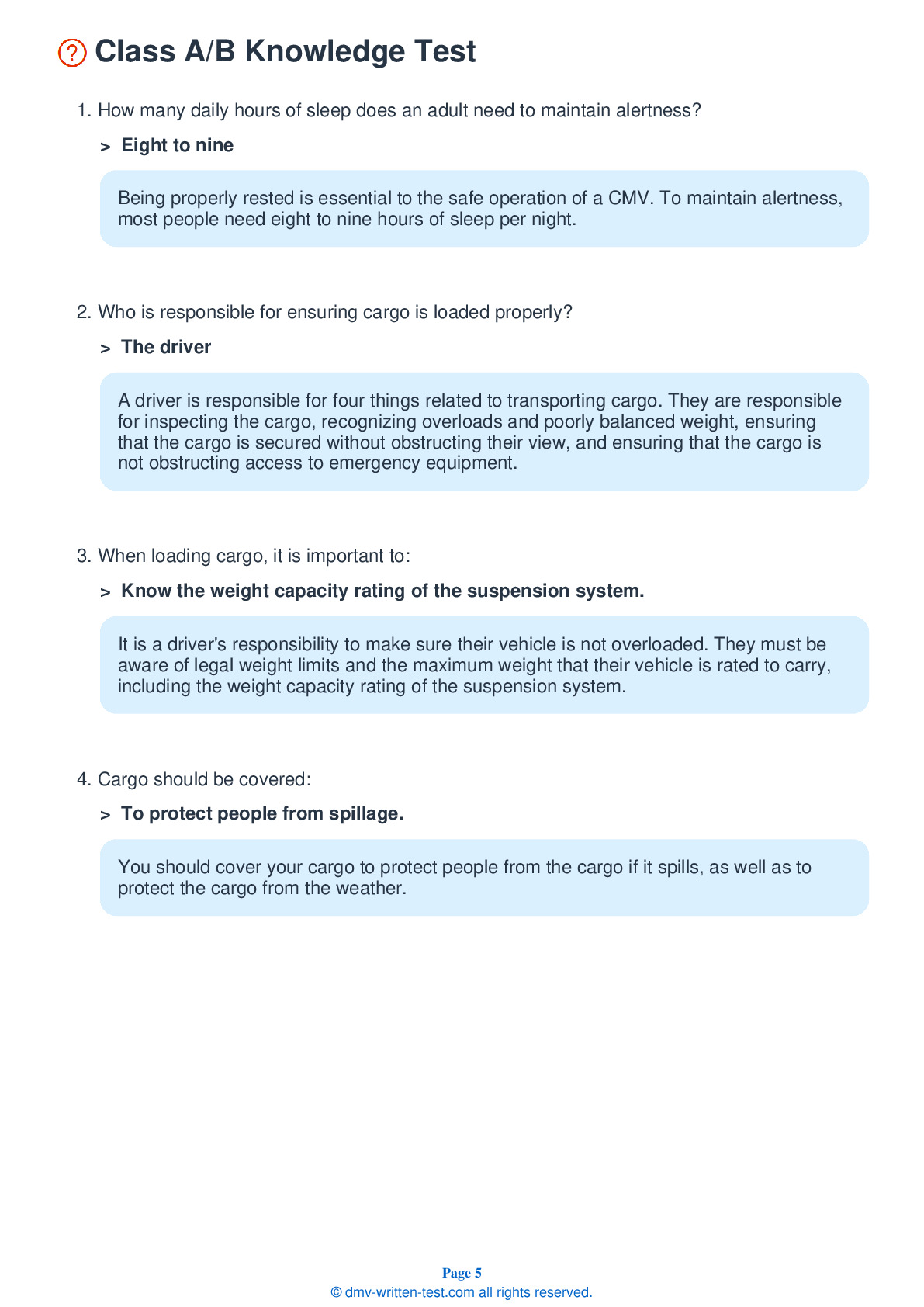Combination
All applicants who are applying for a Class A CDL should be prepared to take the Combination test. This test covers information found in Section 6 of the Commercial Driver License Manual. Section 6 provides the information needed to safely operate tractor-trailers, doubles, triples, and straight trucks with trailers. The test is made up of 20 multiple-choice questions, and applicants will have two hours to correctly answer a minimum of 16 questions. The Combination test is not a replacement for the Double/Triple endorsement test.
Number of Question
Passing Score
8. Trailers with low underneath clearance can present challenges when driving over:
Explanation
Railroad-highway crossings may be difficult to cross when pulling a trailer with a low underneath clearance. In particular, both low-slung units and single-axle tractors pulling long trailers are especially challenging to drive over raised crossings.
9. Combination vehicles need extra space on the road because they:
Explanation
Combination vehicles need more space on the road than other commercial vehicles because they are longer and need more space to turn and stop. It is especially important to properly manage space when you are operating a combination vehicle.
10. When should the trailer hand valve be used?
Explanation
The trailer hand valve, also called the trolley valve or Johnson bar, is used to work the trailer brakes. It should be used only to test the brakes. Using it while a vehicle is in motion could cause a skid.
11. If the emergency air line loses pressure:
Explanation
The emergency air line controls the emergency brakes on a combination vehicle. A loss of air pressure in the emergency line will cause the emergency trailer brakes to activate.
12. If the emergency air line loses pressure:
Explanation
The tractor protection valve keeps air in the trailer's braking system should the trailer break away or develop a leak. A loss of air pressure in the emergency line will cause the tractor protection valve to open and the emergency trailer brakes to activate.
13. In a vehicle equipped with an automatic tractor protection valve, the valve will pop out when air pressure drops to a level between:
Explanation
In vehicles equipped with an automatic tractor protection valve, the valve will pop out if air pressure drops to a level between 20 and 45 psi. When the valve pops out, the protection valve will close, stopping the flow of air.
14. Keeping cargo low can:
Explanation




